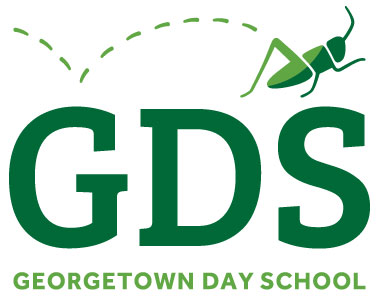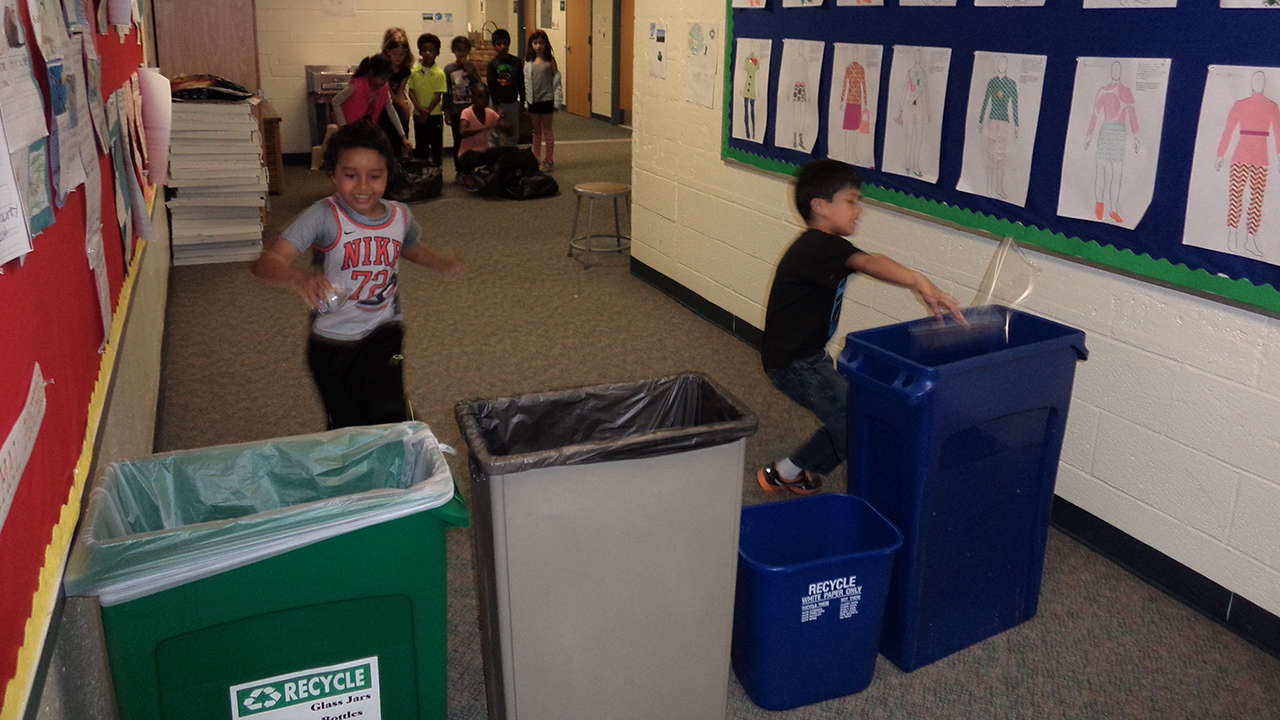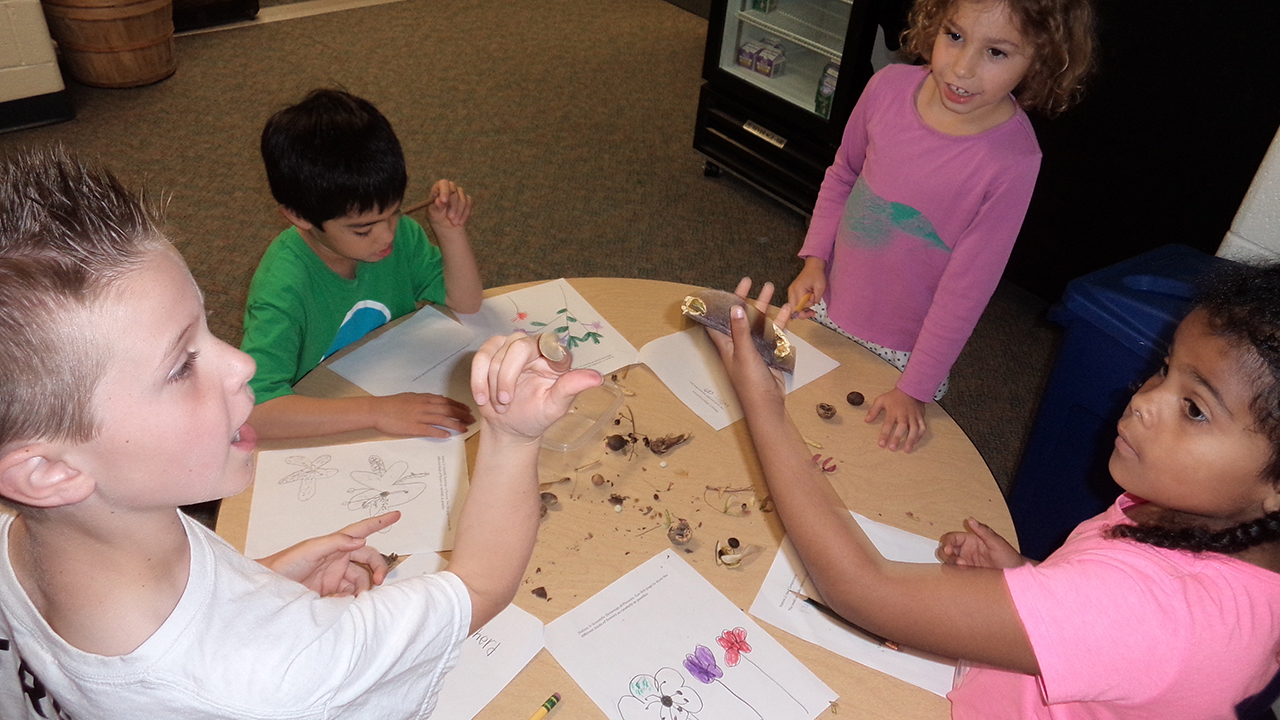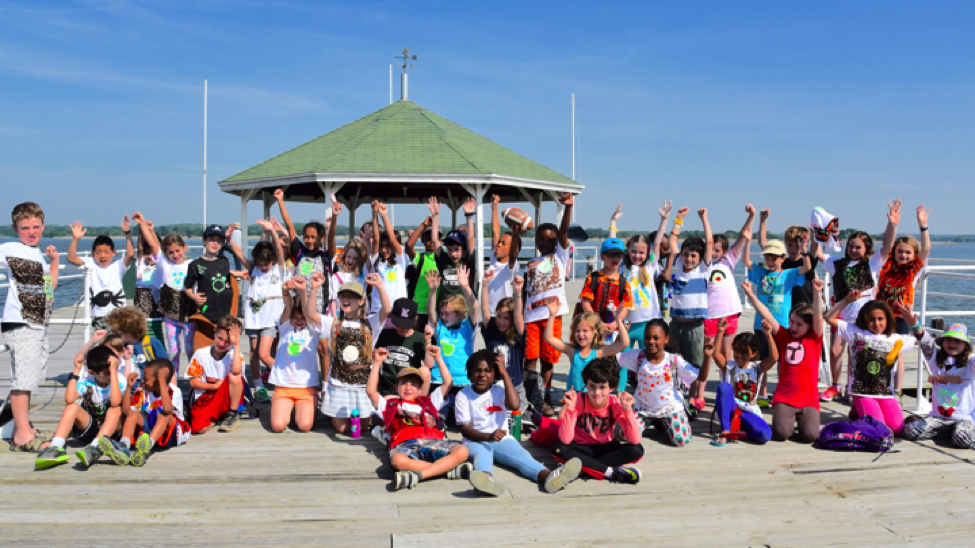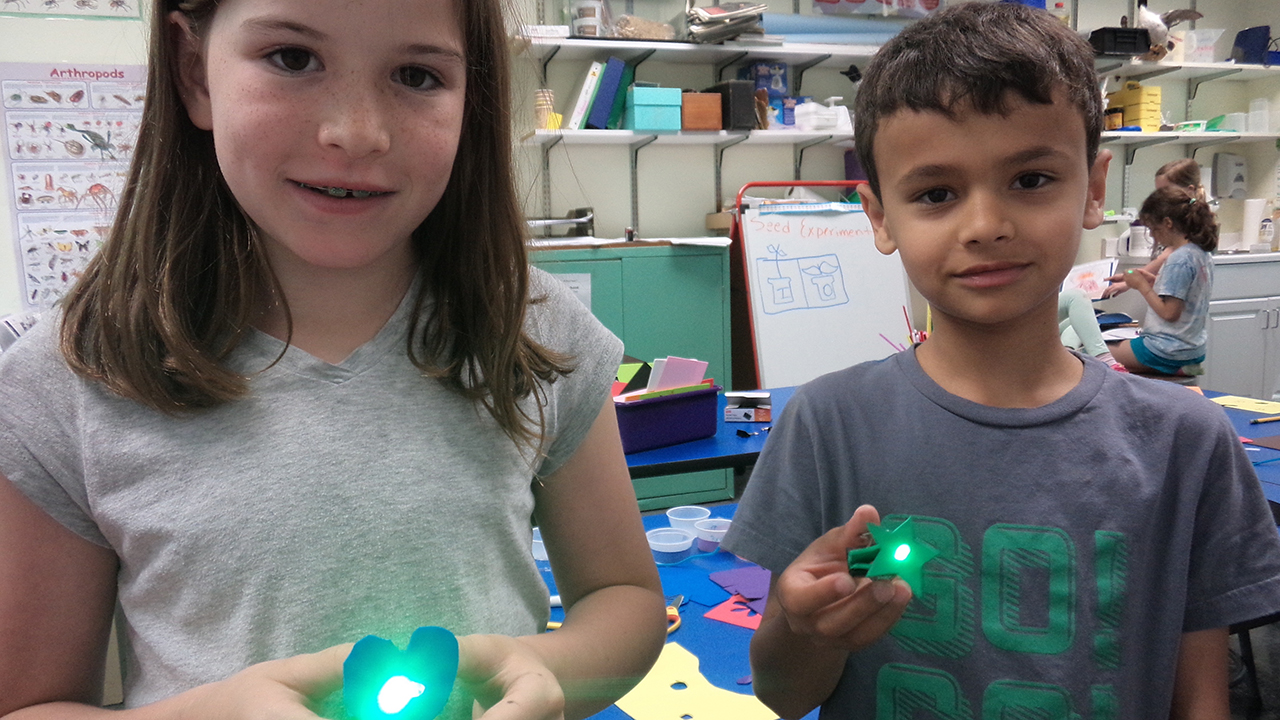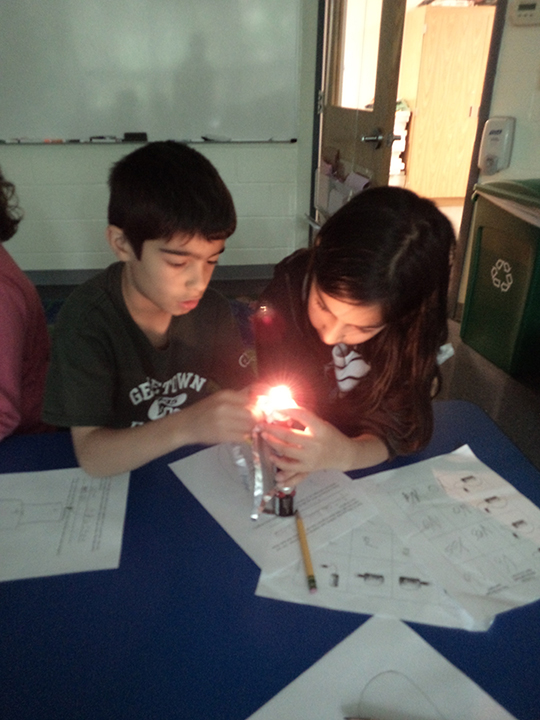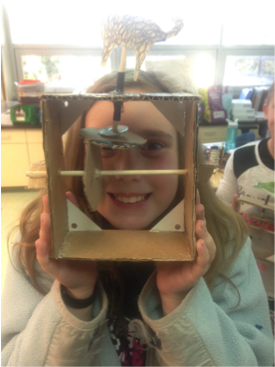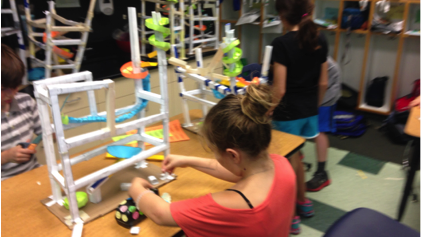The Lower School science mission states:
Student will develop a love of science and science learning while focusing on abilities to ask scientific questions. They will answer those questions creatively, collaboratively, and independently using a variety of scientific processes, skills, and tools. Finally, students will be able to use their skills and knowledge to investigate both personal and global issues.
Every day in Lower School science classrooms, teachers are making this mission a reality, from discussing current events and exposing students to new ideas to presenting topics in a hands-on interactive environment—all while ensuring students are having a great time doing it. The following are examples of how different grades are exploring and analyzing their world.
First Grade — Kathleen Dawson
During Earth Month (April), first graders focused on the negative effects of pollution and the importance of the three Rs: reduce, reuse, and recycle, to better understand local and global environmental issues. Students conducted an experiment observing how pollution in our water and air travels through the water cycle. They enjoyed a fast paced “recycle relay” where they sorted mixed waste into appropriate recycling, trash, and compost bins. Finally, they made “Every Day is Earth Day” signs to hang around school to remind their community of ways to reduce waste and conserve energy and water.
First graders ended the year with a multi-week botany unit experiment using lima bean plants. After experiential field trips to the U.S. Botanic Gardens and Brookside Gardens, students participated in exploration stations to study a variety of seeds, flowers, and plant adaptations. They used knowledge of photosynthesis and information gained in these experiences to make hypotheses about what location around school would produce the healthiest bean plants. They recorded data and made detailed scientific observations of the plants to decide whether or not their hypotheses were correct.
Second Grade — Kathleen Dawson
During Earth Month, students focused on the importance of preserving aquatic ecosystems. Students learned how macroinvertebrates act as indicator species for pollution in surrounding streams, studied the cause and effects of the Gulf oil spill, and experimented in removing oil from water. The students continued work on their classification journals, for which they worked diligently to research, illustrate, and write about their favorite animals from their classification studies. The culmination of the classification unit was a project where students created “adaptation suits” using fabric, feathers, markers, and paint. These suits allowed them to “morph” into creatures with their favorite adaptations.
During our engineering unit, students explored electricity. Students worked together to experiment with different kinds of circuits, explore conductors, and participate in a challenge to see how many conductive objects they could add to a circuit and still get a light bulb to light. They ended the year creating circuits to light headlamps, bookmarks, jewelry, or imaginative creatures of their own design.
Third Grade – Eric Friedenson
We begin the year learning how scientists observe, think about, and discuss scientific questions as we wonder how the world around us works. This questioning usually leads to some big questions about life on Earth and in other worlds. Students ask questions about what another world might need to support life, and I reply, “What do you think the other worlds might need?”
In small groups, students come up with ideas: sun, shelter, water, space, oxygen, ice cream, video games, friends. After some discussion, they see that some of these things might be “nice” to have but not “necessary” for another world to support life.
I ask them how they would know what is truly necessarily to support life, and students come up with an experiment to withhold certain things from the class pet, Sammy the Snake. If Sammy lives, the things they propose are not necessary. If Sammy dies, the things are necessary. After much debate on the value of Sammy’s life (I am usually the only one advocating testing our hypotheses on Sammy), students decide to plant seeds. We go outside to find some seeds and plant them. As weeks pass, some seeds grow and some seeds do not. Our experiment confirms some previously held ideas and refutes some others. As the year progresses, students build on their knowledge of life’s needs and ability to work with each other to explore other areas of science. In our winter astronomy unit, we assess data to determine which planets are best suited for life. And as cherry blossoms bloom in the spring, we observe how plants not only assure survival, but also how they interact with animals and the Earth to avoid extinction. Collaborating as a team we manage energy resources, debate what is necessary or just “nice to have,” and lay a foundation for understanding scientific content and processes.
Fourth Grade — Jay Tucker
In fourth grade, students constructed a cardboard automata. It was a playful way to explore simple machine elements such as cams, levers, and linkages, while creating a mechanical sculpture of an animal for their Country Report that they worked on in humanities.
In partnerships, fourth graders also created paper roller coasters which were part of a unit on physics. The students asked questions such as, “Will the weight of the marble be a factor that affects how long it will take to complete the course?” and, “If I add a piece of track to my course, what effect does it have on the rest of the coaster?” These inquiries provided students with authentic questions to explore as they constructed their roller coasters. Through systematic trial-and-error, observation, and discussion, students engaged in hands-on engineering while drawing upon their scientific toolkits and further developing these skills.
Fifth Grade — Gary Cutler
The final unit of the year is a wonderful example of how our mission statement is incorporated into our curriculum. The unit “Electricity Production” began with a study of how most electricity used on Earth is currently produced by burning fossil fuels to heat water that spins a steam turbine, which in turn spins an electromagnetic generator. We discuss issues of climate change and global warming. We then turned our attention to alternate ways to produce large amounts of electrical current. Through demonstrations and hands-on activities we explored hydroelectric, wind, nuclear, and solar power plants. The students reviewed the workings of electric circuits as well as learned how to use a multimeter to measure the amount of voltage a small generator can produce. Finally, working in groups, the students built small wind turbines from wood and cardboard trying to determine an optimal blade size and shape to produce the most volts possible. Through experimentation and modification, students learned how powerful a turbine can be if built thoughtfully.
This unit effectively combines all the focus areas of our mission statement. Students work collaboratively, while learning about important global issues in a fun and dynamic way that challenges them, teaches them new skills, and encourages them to see science education as fun and worth pursuing into the future.
